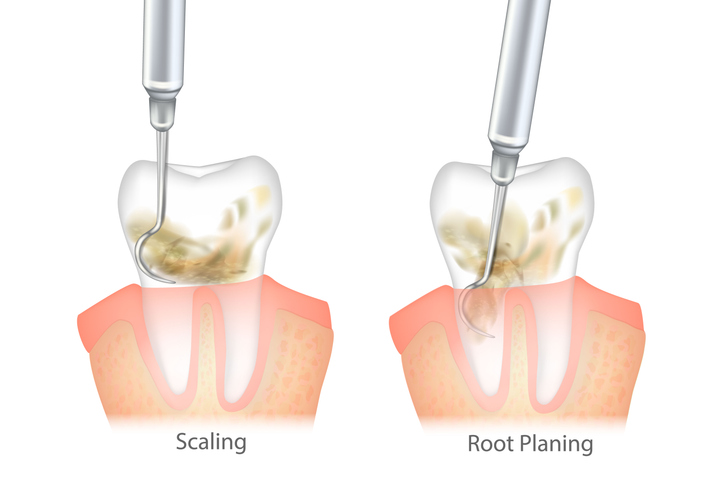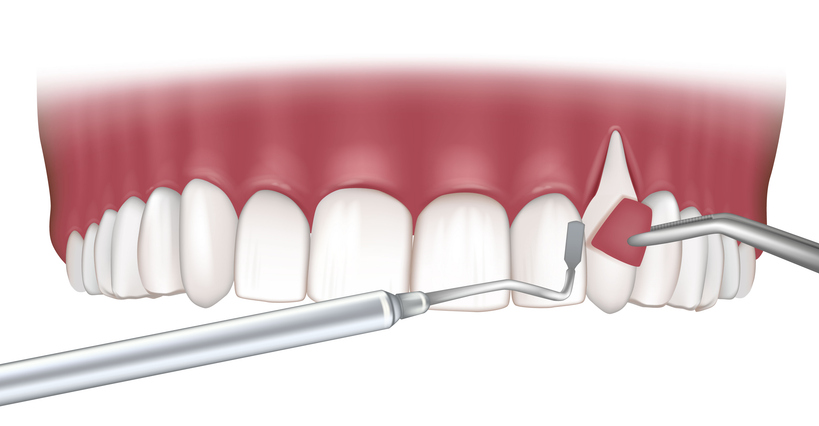Have you ever noticed your teeth looking longer or felt increased sensitivity when eating or drinking? These could be signs of a common oral health issue called gum recession. While it may not be a topic of daily conversation, gum recession is something that can quietly progress until it becomes a noticeable problem. In this article, we’ll delve into the signs of gum recession, its potential consequences, and why it’s crucial to seek early intervention from a periodontist, like Dr. Trujillo.
What is Gum Recession?
First, let’s understand what gum recession is. Gum recession occurs when the margin of the gum tissue surrounding the teeth wears away or pulls back, exposing more of the tooth or the tooth’s root. This can lead to sensitivity, pain, and even tooth loss if left untreated.
Signs and Symptoms of Gum Recession
- Exposed Tooth Roots: One of the most obvious signs of receding gums is when more of the tooth becomes visible, particularly near the gum line.
- Increased Tooth Sensitivity: If you find yourself wincing at hot or cold foods or drinks, or experiencing discomfort with sweet or acidic items, it could indicate gum recession.
- Bleeding Gums: While occasional bleeding during brushing or flossing is normal, persistent bleeding could be a sign of issues with gum health.
- Changes in Tooth Appearance: as periodontal tissue recedes it can cause teeth to appear longer than usual or create a gap between the teeth.
- Loose Teeth: you may notice your teeth becoming loose or a change in the way your teeth fit together when you bite.
Consequences of Untreated Gum Recession
Ignoring gum recession can have serious consequences for your oral health:
- Tooth Sensitivity: Exposed tooth roots can lead to increased sensitivity, making it uncomfortable to eat or drink certain foods.
- Gum Disease: Receding gums are more prone to bacterial infection, which can lead to gum disease if left untreated.
- Tooth Loss: In severe cases, gum loss can cause the supporting structures of the teeth to deteriorate, ultimately leading to tooth loss.
- Aesthetic Concerns: losing gum tissue can affect the appearance of your smile, causing teeth to look longer and uneven.
Importance of Early Intervention
Early detection and intervention are key to managing gum recession effectively. A periodontist, a dentist specializing in the prevention, diagnosis, and treatment of gum disease, can assess the extent of gum recession and recommend appropriate treatment options.
Treatment Options
Treatment for gum recession may vary depending on the severity of the condition. Some common treatment options include:
Scaling and Root Planing: A deep cleaning procedure to remove plaque and tartar from the tooth and root surfaces.

Gum Grafting: This surgical procedure involves taking tissue from another part of the mouth (or using donor tissue) to cover the exposed tooth roots.

Pinhole Surgical Technique: A minimally invasive procedure where the gum tissue is repositioned to cover the exposed roots without the need for grafts.
Don’t Let The Signs and Symptoms Go Unnoticed
Gum recession is a common yet often overlooked issue that can have significant implications for your oral health. By recognizing the signs early on and seeking timely intervention from a periodontist, you can prevent further damage and preserve your smile for years to come. Don’t wait until it’s too late – make your gum recession rescue mission a priority today. Your smile will thank you for it!

We Rescue You from Gum Recession
Call Dr. Trujillo in Phoenix, AZ, for a personalized gum recession treatment plan! We want you to feel confident and smile your best. Call today!





